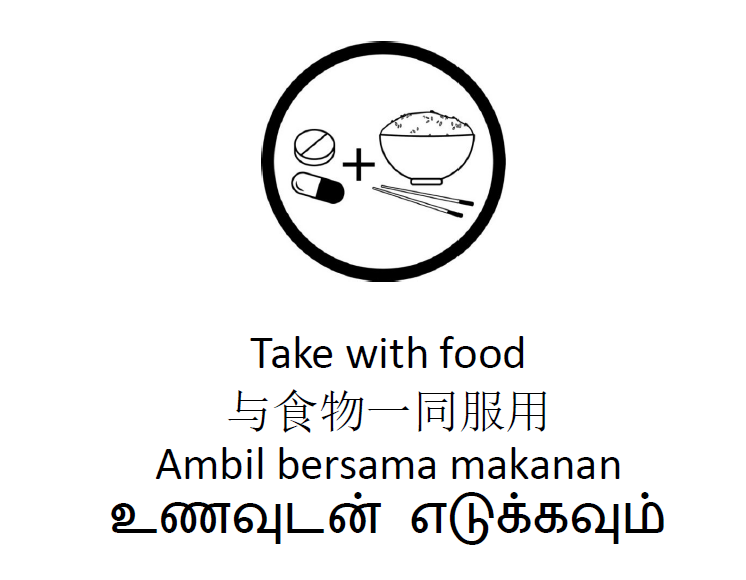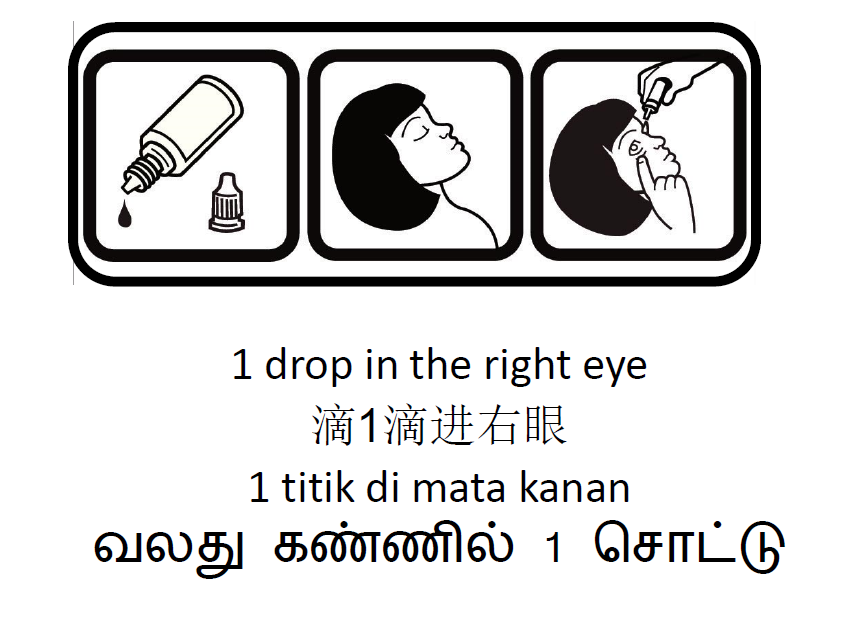Back
Thursday, 03 Oct, 2024
Duke-NUS launches new pictograms to clarify medication instructions, enhancing patient care
- Duke-NUS introduces 35 innovative pictograms to make medication instructions clearer, especially for seniors.
- These visual aids are designed to ensure patients take their medications correctly and safely, with the aim of improving overall health outcomes.
- The team looks to collaborate with healthcare institutions and pharmacies to standardise pictograms portraying medication instructions across Singapore.
SINGAPORE, 3 OCTOBER 2024 – Transforming patient care through clarity and simplicity, Duke-NUS Medical School has introduced visual aids or pictograms designed to make medication instructions clearer. Duke-NUS researchers, together with their collaborators, introduced 35 pictograms and are now working with public healthcare institutions and pharmacies, to encourage adoption of the pictograms so that patients, especially seniors, can take their medications correctly and safely. Given that patients access care services across different healthcare clusters, these pictograms will also help standardise medication-related pictograms across healthcare institutions and pharmacies in Singapore.

A Singapore-specific pictogram. Copyright @ 2023 PROMISE STUDY. All Rights Reserved.

An FIP Foundation Pictogram. Copyright @ 2024 FIP FOUNDATION. All Rights Reserved.
The pictograms can be pasted or printed on prescription medication packets and bottles, to supplement medication labels by hospitals, polyclinics, GP clinics and pharmacies that convey vital information such as medication name and dosing instructions. The pictograms were tested among patient groups and were found to be easily understood.
Currently, each prescription medication bottle or packet is dispensed with a medication label that provides instructions for patients. Most of the instructions are only in English, and some patients have difficulty understanding them. This is particularly the case for older adults who struggle with English and have poor eyesight. In Singapore, more than half (53%) of those aged 65 and above, cannot read English[1]. In a 2020 study[2] of 1,167 older adults, 1 in 2 reported having difficulty in understanding medication labels, leading to uncertainty over when and how often to take their medication. This, in turn, was associated with medication non-adherence, i.e., not taking the medication as advised by the healthcare provider.
Moreover, pharmacists sometimes come up with personalised solutions, such as hand-written medication information in another language or in a larger size, or drawing sketches, to help patients better understand instructions on medication labels. Some healthcare institutions also supplement medication labels with their own set of pictograms.
To address these issues and provide a standardised set of pictograms, Duke-NUS researchers and their collaborators from SingHealth Polyclinics; two healthcare institutions of the National Healthcare Group (NHG) – National Healthcare Group Polyclinics (NHGP) and NHG Pharmacy (NHGPh); and the National Institute of Education, curated and tested a set of 35 pictograms.
Twenty of them were developed by the International Pharmaceutical Federation (FIP) Foundation for Education and Research, a non-governmental organisation. The Duke-NUS researchers and their collaborators supplemented these with 15 pictograms that were developed specially for Singapore’s context and culture.
In total, 35 pictograms were developed or assessed under the project titled “Prescription Medication Label Improvement for Singaporean Elderly” (PROMISE). As part of the project, two studies on the effectiveness of pictograms in conveying medication-related instructions were conducted from March 2019 to February 2021 and involved more than 600 participants.
In these studies, the pictograms were tested locally among older adults aged 60 years old and above, including those with no or limited proficiency in English. All 35 pictograms were found to be valid for use without the need for further testing or modification, with more than 66 per cent of study participants interpreting them correctly and more than 85 per cent rating the pictograms as representing their intended meanings well.
Associate Professor Rahul Malhotra, Deputy Director of Duke-NUS Centre for Ageing Research and Education (CARE), who supervised the studies as the Principal Investigator (PI) of the PROMISE project, said:
“Older patients rely heavily on medication labels as a source of information due to higher prevalence of chronic diseases and medication intake. There is an urgent need to improve existing medication labels to help older adults take their medication safely and better adhere to their medication routine. In our studies, we worked closely with patients and pharmacists to re-design and test the pictograms, to ensure that their needs are addressed.”
Mr Kevin Ben Laurence, Director of the FIP Foundation for Education and Research (Singapore/ Indonesia) said:
“The FIP Foundation pictogram project in Singapore is designed to make medication use safer by giving health professionals a means of communicating medication instructions to people, particularly older patients, who may not be well-versed in English. We are heartened that institutions worldwide continue to find our pictograms useful and hope they will be widely adopted in Singapore.”
One of the public healthcare institutions that is using some of the new pictograms is Woodlands Health’s Urgent Care Centre @ Admiralty. Since April 2024, pharmacists and healthcare staff at the Urgent Care Centre @ Admiralty have had access to the new pictograms and selected a few that were relevant to the patients they attend to.
Ms Yong Pei Chean, Chief, Pharmacy, Woodlands Health, NHG said:
“Woodlands Health is committed to empowering patients in their health journey and ensuring patient safety through the way medication advice is given. The adoption of pictograms can help patients who are unable to read to better understand their medication, and help staff overcome language barriers in explaining medication to patients. We have shortlisted some of the pictograms that we found to be relevant to several common conditions and will be adopting the use of them in our pharmacies to benefit a wider population.”
Duke-NUS is committed to improving patient care through pioneering biomedical and health services and systems research. This study’s insights will help pave the way for a more resilient and future-ready healthcare system that empowers people to lead healthier lives longer.
Prescription Medication Label Improvement for Singaporean Elderly (PROMISE) is funded by the Ministry of Health.
References:
- Malhotra R, Suppiah S, Tan YW, Tay SS, Tan VS, Tang WE, Tan NC, Wong RY, Chan A, Koh GC, Vaillancourt R. Validation of pharmaceutical pictograms among older adults with limited English proficiency. Patient education and counseling. 2022 Apr 1;105(4):909-16. https://doi.org/10.1016/j.pec.2021.07.015
- Malhotra R, Tan YW, Suppiah SD, Tay SS, Tan NC, Liu J, Koh GC, Chan A, Vaillancourt R, PROMISE Study Group. Pharmaceutical pictograms: User-centred redesign, selection and validation. PEC innovation. 2023 Dec 1;2:100116. https://doi.org/10.1016/j.pecinn.2022.100116
[1] Department of Statistics. Census of Population. 2020:2020 https://www.singstat.gov.sg/-/media/files/publications/cop2020/sr1/cop2020sr1.pdf
[2] Suppiah, S., Tan, Y.W., Cheng, G.H., Tang, W.E. and Malhotra, R., 2020. Mediators of the association of limited English health literacy with medication non-adherence among Singaporean elderly. Proceedings of Singapore Healthcare, 29(1), pp.25-32.